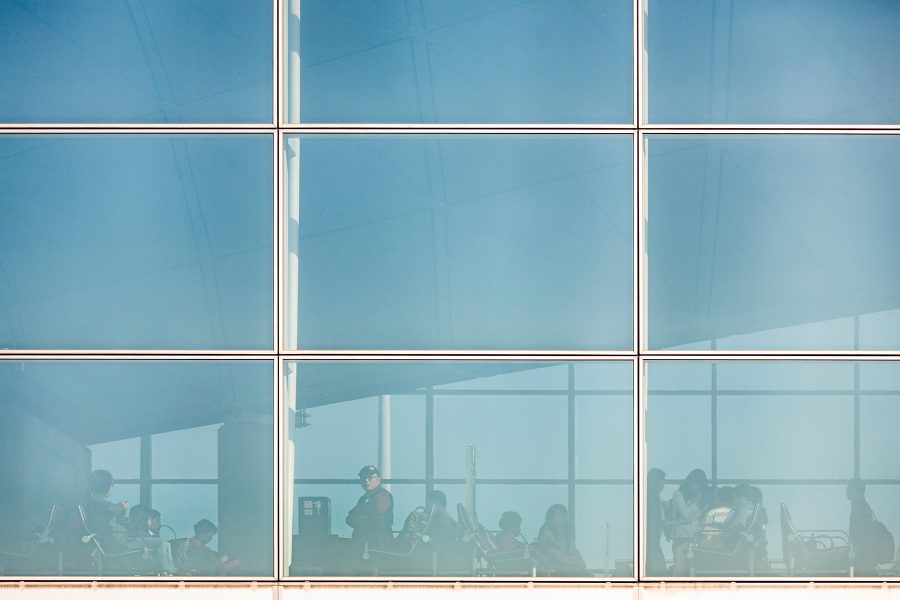Meet the reprotectors: how Cathay Pacific helps passengers manage flight disruptions

What’s the most important thing a passenger can do in case their flight is delayed or cancelled? If you ask the person whose team puts the pieces back together, the answer is immediate. “Make sure your mobile number and email are in your booking,” says Josh Rogers, Head of Airport Customer Service.
It’s important because when things go awry, Rogers’ Customer Journey & Recovery team gets you where you need to go.
One of the benefits of operating a big hub like Hong Kong International Airport is that if there’s an issue with an aircraft on any given day, it’s usually relatively straightforward to get a “tail”, or replacement aircraft. “A flight might have been allocated three or four tails in the final days before it operates,” says Rogers.


When it comes to the long-haul destinations in the Cathay Pacific network, there can be fewer options. If an aircraft becomes unserviceable, or “goes tech”, somewhere like Boston, which is 15 hours from Hong Kong and only served by one flight a day, then there’s no instant remedy. Plus, it’s not only that flight or route that’s affected. There will be plans for that aircraft to operate multiple other flights in the coming days – all of which are now impacted, too.
Rogers’ team performs two key roles: monitoring the customer impact of upcoming pitfalls – and if they do come to pass, making right any delays and cancellations, and getting passengers back on track. In the business, this remedying, rebooking and refunding is known as “reprotecting”.
Say a blizzard hits Boston and closes the airport. Cancelling that day’s flight would be straightforward if the following day’s one was empty – you could shift everyone onto that plane. When that’s not the case, Rogers’ team turn to partner and other airlines.
“Our main priority is to get customers to their destination as close as possible to the arrival time we promised them. Every customer has their reason for travelling; we try to show that we understand and are doing everything we can to help.”
As Hong Kong is a hub airport, many passengers are transiting, so Rogers’ team isn’t just restoring people’s journeys from A to B but also on to C and possibly D as well. That makes a complex task more challenging still.
The team always tries to minimise on-the-day disruption ahead of time. If it looks like the blizzard could affect travellers, the team will post travel alerts so that passengers know that their flight may be affected.
If an airport closure is looking likely, Rogers’ team will work with the Revenue Management Operations team to issue a ticketing waiver, which lets customers cancel or rebook ahead of any firm cancellation announcement.
“Cancellation messages will go out as early as possible to prevent people going to the airport. Allowing for flight lengths and time differences, this might mean making a call 18 to 20 hours ahead,” says Rogers. However, if there are no contact details in the booking or customers aren’t using the Cathay Pacific app, which sends push notifications, they might not find out.
“We try to be transparent in our communication and say, ‘We’ve cancelled your flight due to a snowstorm, but we’ve started the reprotection process and will be in touch shortly,’” says Rogers.
So what sets airlines apart when it comes to disruptions? “Flexibility and ease of self-service are the hallmarks of a good service brand,” Rogers says. Once we’ve provided a new flight, customers can accept it or rebook themselves onto one that suits them better via Manage Booking on the Cathay Pacific app or website.
“Everything we do is about minimising disruption, reprotecting those impacted and allowing our Operations Centre to get the network back on track. When flights are full, this can take longer, but our focus never diverts from looking after every customer.”
So, when the weather rages or your journey is disrupted, rest assured the Cathay Pacific teams are well prepared to bring calm and get your journey back on track, wherever you are in the world.
More inspiration
- China – the Chinese Mainland, Hong Kong SAR, Macao SAR and Taiwan Region
- Hong Kong SAR - English
- Chinese Mainland (China) - English
- Taiwan, China - English
- 香港特別行政區 - 繁體中文
- 中国內地 - 简体中文
- 中國台灣 - 繁體中文
- Africa
- South Africa - English
- Asia
- Bangladesh - English
- Korea - English
- Singapore - English
- Cambodia - English
- 한국 - 한국어
- Sri Lanka - English
- India - English
- Malaysia - English
- Thailand - English
- Indonesia - English
- Maldives - English
- ประเทศไทย - ภาษาไทย
- Indonesia - Bahasa Indonesia
- Myanmar - English
- Vietnam - English
- Japan - English
- Nepal - English
- Việt Nam - tiếng Việt
- 日本 - 日本語
- Philippines - English
- Australasia
- Australia - English
- New Zealand - English